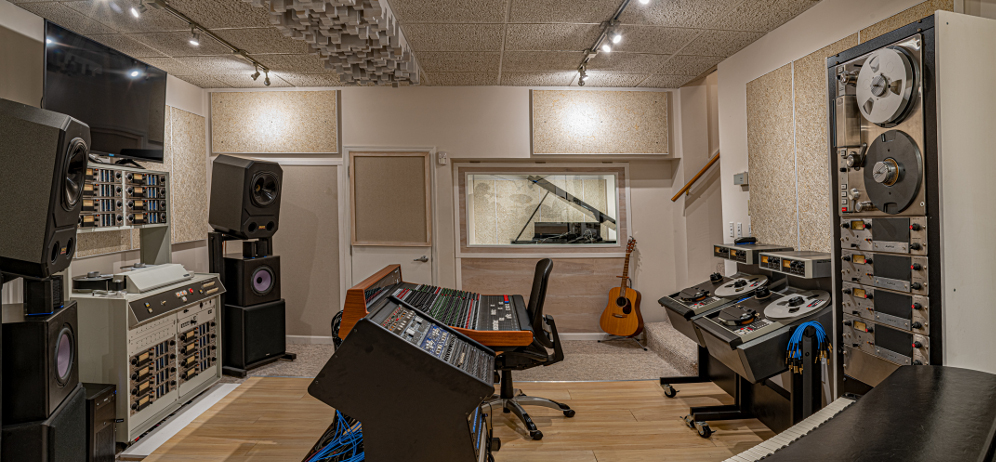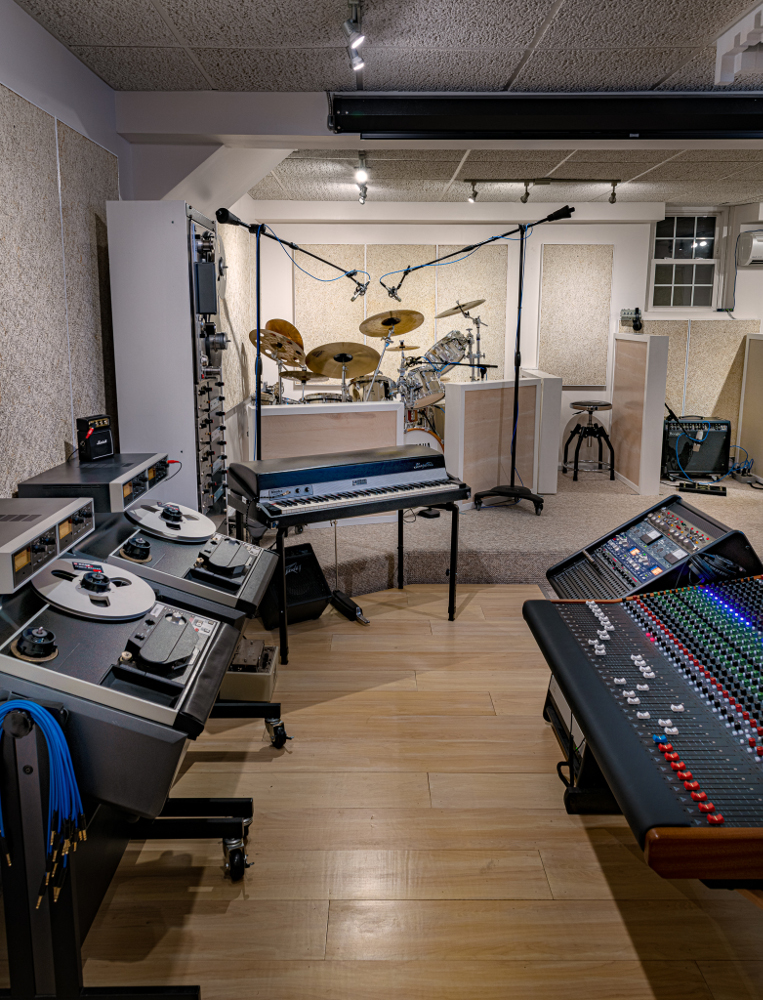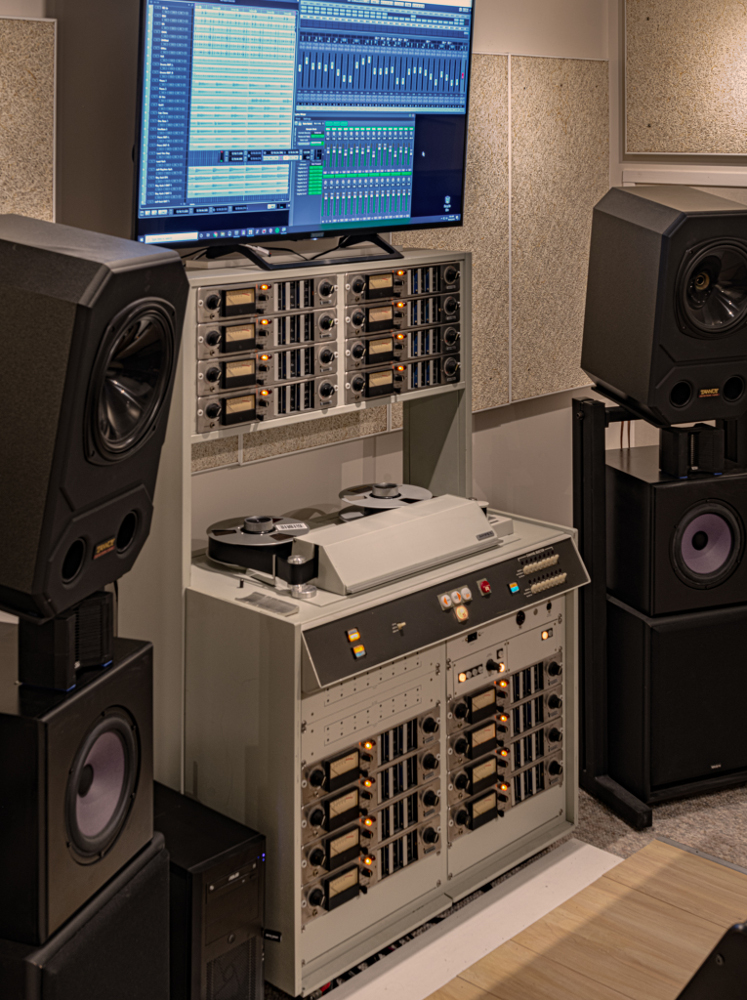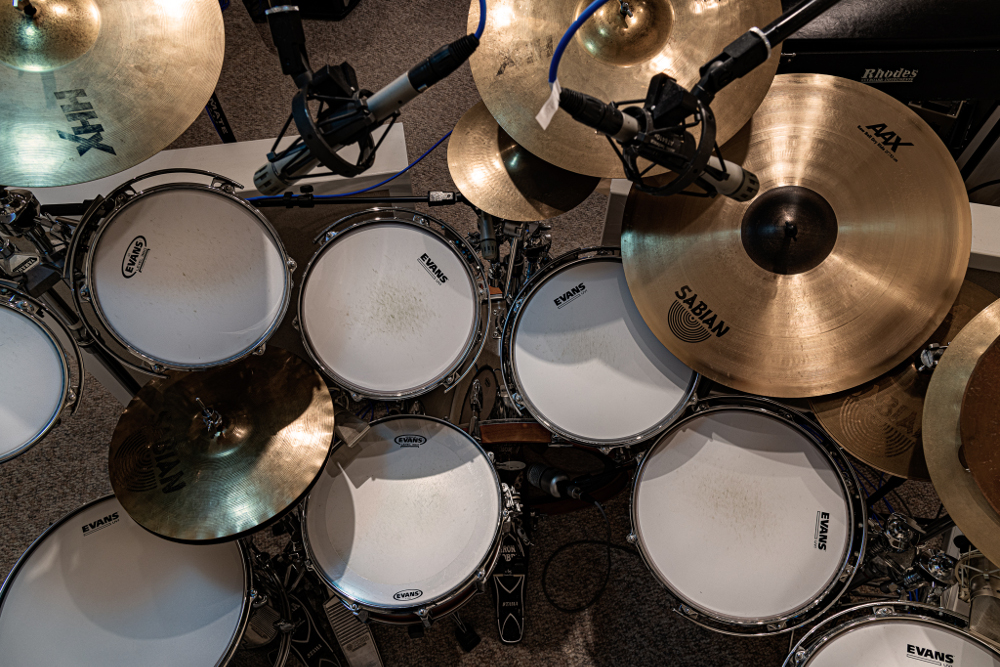Buying an Analog Multitrack Tape Machine? What You Need to Know
This is a guest post by Steve Puntolillo, founder of Mastercraft Recordings,
See Part II of this guide, “What it Takes to Restore an Analog Multitrack Tape Machine,” here.
If you’re thinking about getting into multitrack analog tape recording, putting your old analog warhorse back into service, or just want to learn more about what it takes to get the best possible quality and reliability from a professional analog multitrack, this article is for you!
I made my first recordings on professional analog multitrack recorders in the early ‘70’s. I got hooked on these machines and eventually built Sonicraft, a high-end multitrack analog-to-digital transfer lab (including restoration and enhancements to over 20 vintage professional analog tape recorders).
It was a crash course in what owning and operating an analog multitrack means in today’s reality. It is truly a labor of love to dig deeply into what makes these beasts tick and learn how to squeeze the last bit of performance out of them.
Using an analog multitrack is an amazing experience, and choosing, purchasing, restoring, and upgrading one can be a real adventure. To help you have a safe journey, I’m going to share a great deal of what I’ve learned with you.
I’ll give you advice to help you avoid unpleasant surprises, so you can really enjoy your multitrack. And I’m hoping to open up possibilities to improve and customize your machine, so that it is the best you can make it.

Steve Puntolillo oversees analog journeys from his New Jersey studio, Mastercraft Recordings. (All photos: Steve Puntolillo)
What’s This Project Going to Cost Me?
The good news is that, unlike other types of vintage gear, a professional analog multitrack tape recorder will probably cost you a fraction of its original purchase price. The bad news is that repairing or upgrading it typically costs just as much or more than ever.
Parts can be expensive and difficult to find. If you are not qualified to repair and maintain your machine, from time to time you will have to hire someone who is. And, you will almost always need to invest in some restoration work to get it back in shape for both optimum sound and reliability.
Your best bet is to figure out what you are willing to spend and see if you can make the project fit your budget. So, come up with your dollar amount and let’s go from there.
Choosing Your Analog Multitrack
Each analog multitrack has a personality with its own strengths and weaknesses. You don’t want to end up in over your head or find yourself pouring your hard-earned cash into the wrong machine. So, start out right by choosing the multitrack that’s best for you.
Do you already own an analog multitrack? You should still determine the best machine for your work. There are times when you’d be better off selling yours and investing the money in the “right” machine.
Answer the three questions below—they’ll help you to narrow down your choices. If you happen to own the right multitrack already, consider yourself lucky.
What kind of work do you want to do with your analog multitrack? Make new analog recordings? Transfer, sample, or remix old analog recordings? Make it a giant Pro Tools plug-in? For others to help guide you, you’re going to have to explain your needs to them.
Who will fix it when it breaks? This is huge. Don’t gloss over it. No one is manufacturing new analog multitracks anymore. The vast majority of machines available are from 30 to 50+ years old. Some of the manufacturers are out of business and the rest no longer maintain field service departments. So, you’re on your own.
If there’s only one honest and competent tech in your area, you would be wise to buy a make and model of multitrack which that tech is qualified to maintain. Find out who is available and which machines they know how to maintain and repair. Check their reputations. Get their rates.
Call them all and explain what you want to do with the multitrack you will be buying. Ask them to recommend the machine they think best suits your objectives and find out the reasons they prefer that make and model. Keep notes on what they say so you can make comparisons between machines.
Where are your spare parts going to come from? While you’re talking with prospective technicians and getting recommendations of which multitrack to buy, ask which spare parts you will need to have on hand to keep it running.
Different machines have their Achilles’ heels. You want to keep specific backup parts and assemblies at your fingertips in case you need them. If the machine goes down, perhaps you can swap the defective assembly and continue to operate while you arrange to have it repaired.
If parts for the machine you are evaluating are scarce, consider an outright purchase of a backup machine as a parts source. A good supply of specific and off-the-shelf spare components can mean the difference between a successful service call and having to pay for the tech to return after the needed part arrives.
By defining your resources and your intended usage, you’ve narrowed your choices down. To make your final decision, here’s a list of specific questions to be answered. Not all of them will be of equal importance to you.
For example, the bulk of my use of analog multitrack machines was transferring existing tapes into the digital domain. Seamless punch-ins and multi-point auto location were not important to me. But, if you want to do live sessions and overdubs to analog tape, they may be very important to you.
Rate these questions according to their importance to you and go through them for each machine you are considering:
- Is this machine reliable, or can it be made reliable within my budget?
- How do its repair costs compare with other machines I’m considering?
- Can I do some of the maintenance myself or is it too complex for me?
- Does it support the tape width and track formats I need?
- Can I or my clients afford the width and/or speed at which it consumes tape?
- Does it have a remote? Which features does the remote have?
- How quickly and seamlessly can it punch in and out?
- Does it auto-locate? How many locate points can it store in memory?
- Can it lock to time code? How is this done?
- Can it be aligned to take advantage of the newer tape formulations?
- Can it “remember” more than one alignment? How many? Can it self-align?
- Which speeds (7.5 ips, 15 ips, 30 ips) can it run?
- Which EQ curves (NAB, IEC1, AES, etc.) does it support?
- Does it have varispeed (variable pitch control)?
- Does it have built-in noise reduction? Which type?
- How does this machine sound?
- How gentle is the transport on tape?
- How much ambient noise does it make?
- How good is the sync response?
- What are the specs for frequency response, signal-to-noise, speed consistency, and wow and flutter? Be sure to look at what operating level and tape type the signal-to-noise specs were referenced to when making comparisons. Also, pay attention to whether or not measurements are weighted. Weighted measurements always look better than unweighted measurements. In some cases, there is more than one kind of weighting. For all specifications, you want to make absolutely sure you are comparing apples to apples.
- What will it cost to make the overall repairs and improvements I want? See the section on Restoration in Part II of this article coming next week on SonicScoop.
- Which components in the machine can be updated or upgraded to something better? See the section on Upgrades below. See the section on Upgrades in Part II of this article coming next week on SonicScoop.
- Can this machine be easily and cost effectively modified to meet my requirements? If a machine is very close to ideal, but doesn’t quite serve your purpose, you may be able to close the gap. Some examples of reasonable modifications might include making a 7.5/15 ips machine run 15/30 ips, changing a machine from NAB EQ to IEC1/CCIR EQ at 15ips, outfitting a 2-inch 24-track machine to run 2-inch 16-track, adding support for time code, etc. See the section on Upgrades in Part II of this article coming next week on SonicScoop.
So, now that you have selected the make and model of analog multitrack that best meets your needs, you are ready to start the hunt to purchase one, right? Well, almost.
There’s just one more thing. Check your budget and get pricing on which accessories you are going to need. Here’s a checklist of candidates:
- Service and operations manual(s)
- Editing supplies: splicing block(s), leader tape, razor blades, etc.
- Tape path care: demagnetizer, head & pinch roller cleaners, etc.
- Spare reels, hubs, and boxes
- Blank “shop tape(s)” for alignment and testing
- Patch bays, connectors, and wiring
- Outboard Varispeed
- Time code synchronizer
- Noise reduction system
If you are going to align or maintain the machine yourself, the minimum requirement is:
- Alignment tape (for each tape width)
- Oscillator
- Oscilloscope
- Alignment tools
- Tape tension gauge (Tentelometer)
You may also wish to consider some or all of the following shop gear:
- Soldering iron or “station”
- Desoldering tool or station
- Tools for wiring and mechanical repairs
- AC Voltmeter
- Wow and Flutter meter
- Spectrum Analyzer
- Distortion Analyzer
Purchasing Your Analog Multitrack
In a perfect world, your tech finds you a cream puff machine that’s been sitting mostly idle in a rich entrepreneur’s smoke-free home studio ever since it was manufactured. Mr. Success now wants to recycle his studio into a home theater and just wants the machine out of his way.
Hey, it does happen. Just not to me.
Unless you have (1) a shallow budget, (2) a deep commitment to restoring one of these machines, and (3) a track record of finishing-a-project-no-matter-
In the process of cleaning up and restoring a beat machine, you are going to spend the difference between what it and the pristine machine costs anyway. Maybe more. You might as well buy the better machine and save yourself a lot of time and hassle.
But, you can’t always find the ideal machine in your budget or time frame. Most of the machines you will be offered will have seen from moderate to heavy usage and will look that way.
Typically, a used mulitrack’s owner has been contemplating selling it for quite a while. He long ago stopped investing in it and began working around its problems instead of fixing them. Heads are worn. Brakes are worn.
The pinch roller is getting gooey. Bearings are noisy. Fans are noisy. Filters are clogged. Bulbs are out. Switches don’t always switch. Relays are frozen. Meter lenses are broken. Some channels don’t erase or record or play. Some make crunchy noises that come and go. Some don’t make any noise at all. Maybe the machine is out cold and won’t even turn on.
If you’re not a tech, before you buy a machine like this one, you’d better get a tech. Have the tech go through the machine with you. Together, you can evaluate the following:
Look at the head assembly very carefully. The heads are the heart and soul of the machine. If the heads don’t deliver 100% of the signal, nothing else in the machine or your studio will recover the loss. Are these heads original, upgraded from the originals, or are they cheaper replacements?
Make sure every track of each head is working. If a multitrack head has one dead track, the entire head is worthless. See if you can persuade the machine’s owner to ship the head assembly (or assemblies) to one of the handful of qualified head experts for evaluation. They can tell you what quality the heads are and how much life is left in them.
A quick word about head life. Being told a head assembly has thirty to fifty percent remaining life (after relapping) may sound like a problem to you, but it probably isn’t.
Considering that professional analog recorders were built to run 24 hours a day, seven days a week, for years, it is unlikely you will ever burn through them. However, make sure you find out what it will cost to put the assembly in shape before you buy the machine.
Manufacturers of multitracks often performed or recommended field upgrades. Like a “recall” on an automobile, some field upgrades are essential. Before you buy the machine, find out what the upgrades are and see if the machine has them. Go through every printed circuit card and verify that it is the original or a suitable upgrade. Also, look at cards for changed components, modifications, areas toasted from overheating, signs of repair soldering, etc…
Doing a full alignment on the machine will tell you a lot in a comparatively short time. Be sure to try every function. List the defects that you find as well as broken or missing parts you will have to replace. Then, estimate what it will cost for repairs and replacement parts.
Are you getting everything you need? Make a list of options offered for that particular multitrack and see which ones the machine is equipped with. Remember, an option included in a package deal for a machine will almost always cost you less than it will purchased on its own.
If any spare parts and accessories come with the machine, take an inventory of them. A seller who is “throwing in” a good usable 2-inch 15/30 ips alignment tape could save you hundreds of dollars off of your accessories budget. Or, perhaps he is including some or all of the backup parts you need.
OK, it’s time to do some math.
- The seller’s price for the machine
- plus cost of repairs
- plus cost of missing options or accessories
- minus the value of desirable or salable extras included in the deal,
- Tells you what you are really paying for a complete and operable machine.
If you are planning to do cosmetic restoration, upgrades, modifications, or need to have the machine moved or shipped, add these costs in now. At this point, you should be looking at a number that’s reasonably close to your total cost.
The transaction should leave room in your budget for the unexpected. If that is the case, and you feel the deal makes sense, you are good to go.
What if the machine is too far away to inspect? Try to track down an honest qualified tech in the area where the machine is located and have him check the machine out for you.
Otherwise, you have little choice but to assume the worst and make your decision (and offer) from that standpoint.
Most people selling large multitrack recorders (typically from 400-800 lbs) do not want to deal with shipping. I have had very good success with hiring national moving companies to bring the machine to me. It is hassle-free for both you and the seller. The moving company sends a truck to the seller’s location, where the movers wrap the machine in plastic and moving blankets, roll it into their moving truck, and bring it right to your door.
See Part II of this guide, “What it Takes to Restore an Analog Multitrack Tape Machine,” here.
Steve Puntolillo is the founder of Mastercraft Recordings. A music producer, musician, recording, mixing and mastering engineer, Steve used his decades of analog tape and digital audio production expertise to launch Sonicraft A2DX Lab.
Renowned in the professional audio industry as the “ultimate analog to digital transfer facility”, Sonicraft became essential to the lucrative world of musical reissues, winning over dozens of labels who entrusted it with analog tape recordings of some of the world’s most beloved artists. These include: Bruce Springsteen, Bob Dylan, Jimi Hendrix, Janis Joplin, Dire Straits, Grateful Dead, REM, and hundreds more. Learn more about Steve and Mastercraft here!
Please note: When you buy products through links on this page, we may earn an affiliate commission.










[…] If you’re thinking about getting into multitrack analog tape recording, putting your old analog warhorse back into service, or just want to learn more about what it takes to get the best possible quality and reliability from a Read more… […]